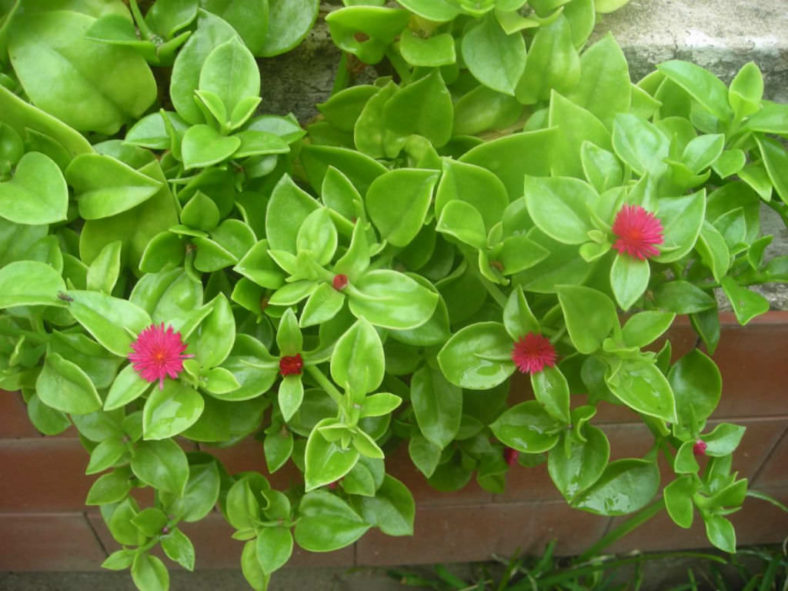Aptenia is a small genus of flowering plants in the family Aizoaceae. They are native to southern Africa. The genus name is from the Greek "a," meaning "not," and "ptenos," meaning "winged," and refers to the wingless fruit capsules.
In 2007, this genus and several others were transferred into Mesembryanthemum.
These are succulent subshrubs growing from a system of fibrous, often fleshy roots. The stems lie prostrate on the ground or may climb. They are green and fleshy with woody bases. Leaves are mostly oppositely arranged, but those near the inflorescences may be alternate. The leaf blades are flat, hairless, sometimes waxy, and usually heart-shaped or occasionally lance-shaped. Flowers are solitary or grow in small whorled clusters, usually in the leaf axils along the stem. The flowers are about 0.4 inches (1 cm) in diameter. There are two large sepals and two smaller ones. The corolla contains many narrow petals in different shades of purple, pink, yellow, or white and several staminodes that look very much like the petals. The many fertile stamens at the center are white or yellow. The fruits are capsules with four valves.
Growing Conditions and General Care
Water Aptenias only when the soil is completely dry and then allow enough to drench the soil to a depth of about 6 inches (15 cm). To check for dryness, poke your finger into the soil. Never water if the soil feels damp or cool, as Aptenias, like all other succulents, is prone to rot in soggy, waterlogged soil. Water Aptenias lightly during the winter if the leaves begin to look shriveled. Provide only enough water to moisten the soil as the plant deteriorates quickly in cool, damp soil.

Withhold fertilizer often results in a weak, floppy plant. Trim the plant as needed throughout the growing season, using pruners or garden shears to keep the plant tidy. Pot the plant and bring it indoors for the winter when nighttime temperatures drop below 50 °F (10 °C).
Grower's Tips
Aptenias are not difficult to grow in containers. Use a commercial mixture for succulents, or make your own. Put the container in direct sunlight and water deeply whenever the soil feels dry.
Links
- Back to genus Mesembryanthemum
- Succupedia: Browse succulents by Scientific Name, Common Name, Genus, Family, USDA Hardiness Zone, Origin, or cacti by Genus